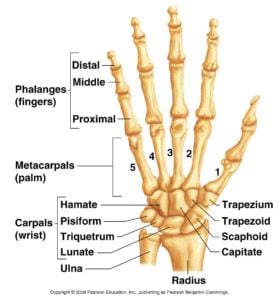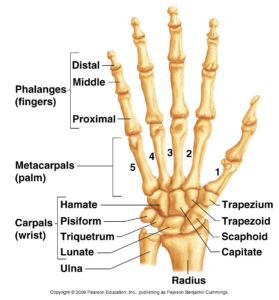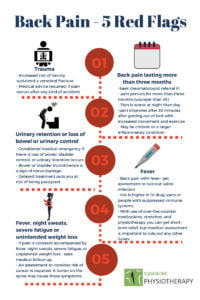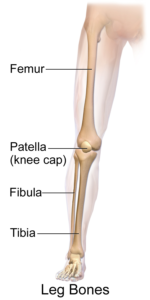Having a fracture of the wrist is one of the most common hand or forearm fractures. Falling down awkwardly or slipping on ice or involved in a motor vehicle accident are some common ways how a wrist can get fractured. Generally, wrist fractures are caused when it comes under a lot of sudden stress due to falling. The weight experienced by the wrist at the moment of contact with the ground is many times the body weight of the individual. Hence, the bones break under the stress.
Anatomy of the wrist
 image credit- droualb.faculty.mjc.edu
image credit- droualb.faculty.mjc.edu
The wrist is basically a joint between the bones of your hand and the bones of your forearm (ulna and radius). It consists of carpal bones which are attached to the forearm bones on the one side and the metacarpals of the hand. The bones are attached together with ligaments which make the wrist joint stable and limit excess movement.
What are the most common symptoms in wrist fracture?
Fracture of the radius is the most common type of wrist fracture. This happens during the fall when the end of the radius bone is pushed up and back relative to the rest of the forearm. This leads to a deformity of the forearm. Most commonly found symptoms in wrist fracture are:-
- Acute pain- Pain in the wrist is the hallmark of a fracture. It is felt in the lower end of the forearm. It becomes worse by even slightest movement of the hand or rotation of the arm.
- Tenderness
- Swelling- Swelling is generally seen around the wrist and hand
- Arm deformation- By raising the hand above the forearm, one can see the deformity of the wrist
- Numbness- if the nerves are compressed or stretched, you will experience numbness in the fingers or thumb.
- Bent fingers- This happens when the tendons in the wrist are trapped due to the fracture. This causes the fingers to bend and cannot be straightened.
The pain and swelling may continue for several days as your body heal gradually. The accident and the resulting fracture damage the muscles and tendons which take time to heal. Generally, when you go to your doctor, he advises you to put on a plaster or splints to help the bone heal on its own. Once your plaster or splints are removed, judging by the condition of the bone, he will advise you for physiotherapy to help recover quickly.
How can physiotherapy recover from wrist fracture?
Generally, when we receive patients with a recent wrist fracture, their casts have been cut off by their doctor. The pain and swelling have long subsided. The wrist is stiff due to the cast. The next steps in rehabilitation process are-
- Getting the full range of motion as well as dexterity in the wrist, hand and arm.
- Strengthening of muscles to prevent scope of future injury or recurrence of the wrist injury
You will perform various exercises under the supervision of our experienced therapists. The initial exercises do not involve putting any weight on your wrist. These generally include stretching of the wrist by moving it up or down. These help to gradually go away with the stiffness and bring range of motion.
Below are some of the exercises that you can do at home to begin with.
 image credit- drfoot.co.uk
image credit- drfoot.co.uk
As your wrist heals, the exercises involve putting them under measured weight and stress to strengthen the muscles to help prevent future or recurrence of the injury.
Always remember that knowing the problem and its causes can go a long way in recovering quickly. If you are suffering from a wrist fracture, feel free to book an appointment with us by calling at 905-232-2202.You can also fill our online form here. We have an experienced team of physiotherapists who can not only help you recover quickly but also help prevent future occurrences. We have been present in Mississauga for over 14 years now and are conveniently located in the Square One area.




